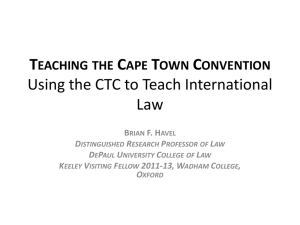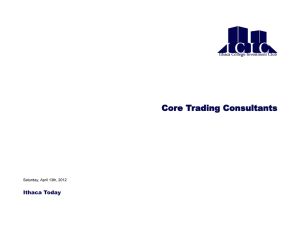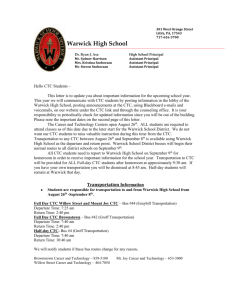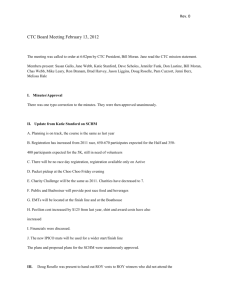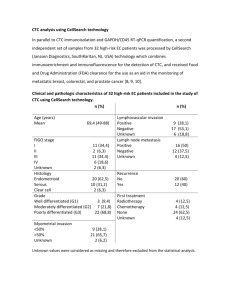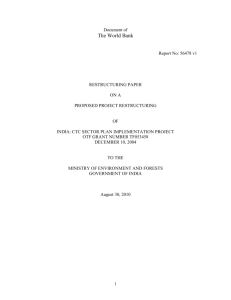Economic assessment - Oxford Law Faculty
advertisement
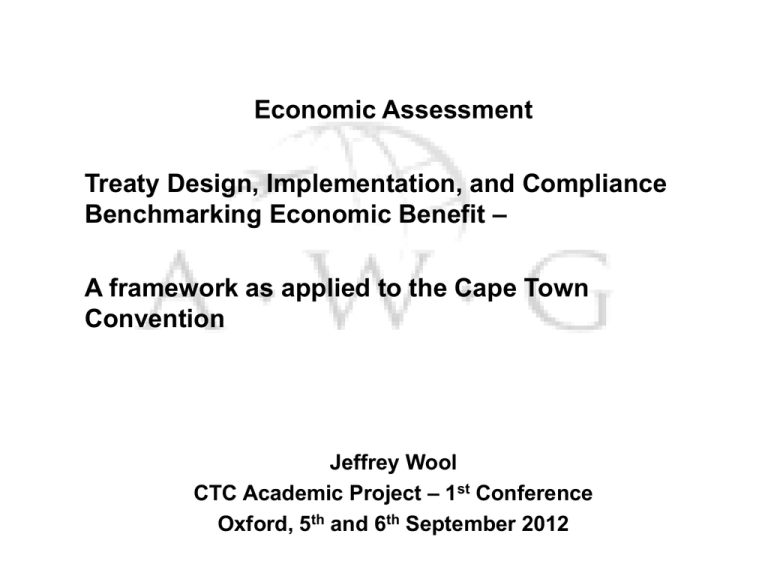
Economic Assessment Treaty Design, Implementation, and Compliance Benchmarking Economic Benefit – A framework as applied to the Cape Town Convention Jeffrey Wool CTC Academic Project – 1st Conference Oxford, 5th and 6th September 2012 Topics • • • • • • • • I II III IV V VI VII VIII Introduction Int’l Commercial Law Reform and Economic Benefit (EB) Observations on Economic Assessment (EA) Framework for Benchmarking EB Application of Framework to CTC Evidence, Analytics, and Literature relating to EB Select Comments on Rail and Space Protocols and EA Conclusions 2 I. Introduction – part of CTC academic project • Economic assessment segment in the CTC academic project • Objectives of segment – Framework for economic assessment – Economic assessment of CTC – Guidelines for applied assessment of CTC • Economic Impact Forum • Contact Group (next slide) w/ leadership of Deutsche Bank (P. Kaufer) • Initial materials – Draft discussion document – Initial research – Article summarised in this presentation 3 I. Introduction – contact group • • • • • • • • • • • • • Anthony Saunders – NYU (Stern) Ingo Walters – NYU (Stern) Oren Sussman – Oxford (Said) Julian Franks – London Business School Vadim Linetsky – Northwestern (McCormick, IEMS) Jacques Lawarree – University of Washington (Dept. of Economics) Jonathan Root – Moody’s Thomas Cahill – Morgan Stanley Patrick Kaufer – Deutsche Bank Eric Eugene – BNP Paribas Klaus Heinemann – HH Kapital Frederique Dahan – EBRD Nils Hallerstrom – PK Finance • N.B.: (1) This is an initial list; and (2) Airbus and Boeing will support via their co-chair role in AWG 4 I. Introduction – summary of article • Purpose – skeletally address the design and implementation of the CTC and compliance with these texts benchmarking EB • EB as the central and driving objective of the CTC • Scope – Convention and Aircraft Protocol (see comments on rail and space protocol) • Framework for benchmarking and application to CTC, responding to questions on why a treaty might not produce EB • Potential wider application in the field of international commercial law reform 5 II. International Commercial Law Reform and Economic Benefit (EB) • International commercial law reform (ICRL) • Instruments designed to facilitate transactions. Role of EB • EB defined • Role of treaties in international commercial law reform 6 III. Observations on Economic Assessment • Incongruity b/ need for EB and developments in the field of EA and issues, problems, and practicalities in that undertaking • Different fields of study, perspectives, objectives, and orientation (law, finance, economic, and government policy) • Terminological and methodological issues, including – nature of work / reasoning (a priori / a posteriori) – issues: time frames; assumptions; causation; data 7 IV. Framework for Benchmarking Economic Benefit (EB) • Symbolic, non-qualified formula: EB = RIC – R = transaction risk reduction (requirements to have that effect) – I = effective implementation (prevailing national law) – C = compliance, presumed or actual • Country / political risk model • Rationale for and role of presumptions • Allocation of EB 8 V. Application of Framework to CTC • Symbolic, non-qualified formula: EB = RIC – R = transaction risk reduction (has that effect) – I = effective implementation (some problems and solutions) – C = compliance, presumed or actual • CTC actions • Specific circumstances further supporting presumptions – – – – Enforcement proxy – ASU 2011 Costs of noncompliance with aviation law Crossover costs of noncompliance with investment law Enhanced reputational costs given transparency / publicity9 VI. Evidence, Analytics and Literature relating to Economic Benefit (EB) • Evidence and analytics – – – – ASU 2011 Capital market transactions Other reference points (banking and leasing) Analytics generally • Literature – – – – CTC literature (Saunders / Walters; Linetsky; Zasu / Sato) Compliance literature (empirical support for treaty compliance) Commercial / insolvency law and law reform (vast literature) CTC academic project research 10 VII. Select Comments on Rail and Space Protocols and EA • Governments recalibrated balance between (1) commercial objectives and (2) other government policies • Some elements of the Rail Protocol, more in the Space Protocols, would raise issues if the proposed framework above were to be applied (element “R”, transaction risk reduction) – public service exemption (rail and space) – additional insolvency option (rail) – other limitations / restrictions on remedies (space) • Threshold work needed – current / future demand for assets – role of secured financing / leasing in these sectors – assessment of role of protocols (re current law / risk reduction) 11 VII. Conclusions • CTC is one of the most success ICLR treaties in terms of ratifications and innovative content • That is attributable to EB = RIC • Thus need to ensure RIC • Wider applicability of EB = RIC (before, during, and after diplomatic conferences) in the field of ICLR • Additional supporting work / research 12

